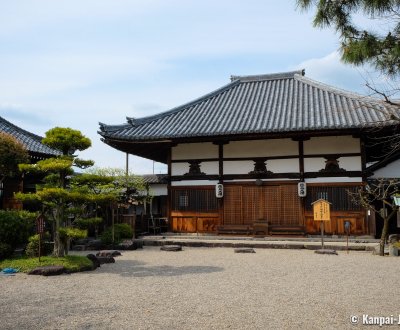Classical Japan
From Chinese Influence To A Thriving Japanese Culture
Classical Japan is considered the period during which the bases of Japanese culture were established. The classic age extends from the mid-6th century to the end of the 12th century and encompasses 3 great historical periods: Asuka, Nara and Heian. The understanding of Japanese classic culture is mainly based on what has been studied from its elites.
The Japanese state develops and consolidates in the heart of the Kansai area, between Kyoto, Nara and Asuka during the classical age. Continuing the prehistorical times, continental Asia’s influence remains strong, but a local culture is starting to bud, that would constitute the basis for the archipelago’s traditional and refined culture.
Asuka Period (538 or 552 - 710)
The Asuka period is characterized by a nomadic power center, with headquarters moved after every event considered impure or nefarious (death, riots, etc.) but always around Asuka, a city after which the era was named afterward.
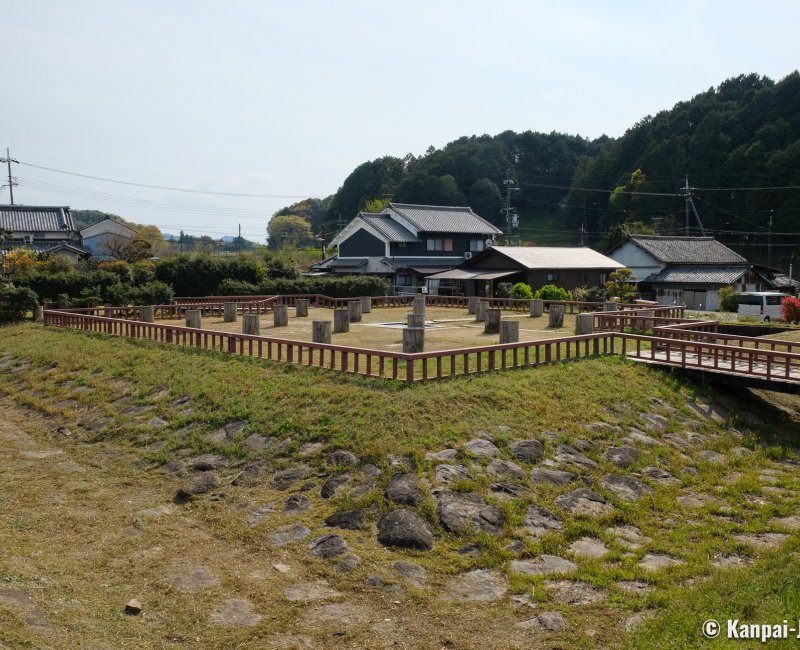
Historians make the Asuka period start in the middle of the 6th century (538 or 552) that is to say from the official introduction of Buddhism in Japan, at the Imperial Court in the first instance. It is said that Zenko-ji temple in Nagano is preserving the first Buddhist statue offered to Japan; the first Buddhist temple being Asuka-dera, built at the end of the 6th century. Buddhism introduction is a cultural milestone showing the rulers of Japan’s will to follow the example set by China, the great power of the times.
The Middle Kingdom was indeed used as a model to base the gradual making of a centralized state, administered by a class of civil servants, and its influence extended to architecture, both religious and palatial, and to the mapping of the capitals on a geometric checkered plan.
Prince Shotoku Taishi (574 – 622), who served as a regent from 593, centralized the state’s institutions, designated Buddhism as a state religion and founded, among others, Osaka’s Shitenno-ji temple as well as Horyu-ji. He is also said to be the first to use the name Nihon to refer to the country.
The title of emperor, Tenno (天皇), still in use nowadays, was employed for the first time by emperor Tenmu (reign from 672 to 686). While still supporting Buddhism, he also strengthened the relationship between the Imperial Household and Ise Jingu Grand Shrine.
The newly established states is also aiming at policing the populations of the Tohoku area and Hokkaido Island, against which it sends troops. The relationships with the Asian continent are still close and technology transfers (weaving, jewelry, lacquer, carpentry, etc.) are ongoing.
The Fujiwara clan begins to extend its influence at the Court, and the Buddhist clergy to develop its power. The relatively long-term relocation of the capital in Heijo-kyo in 710 opens the Nara period, named after the site’s current name.
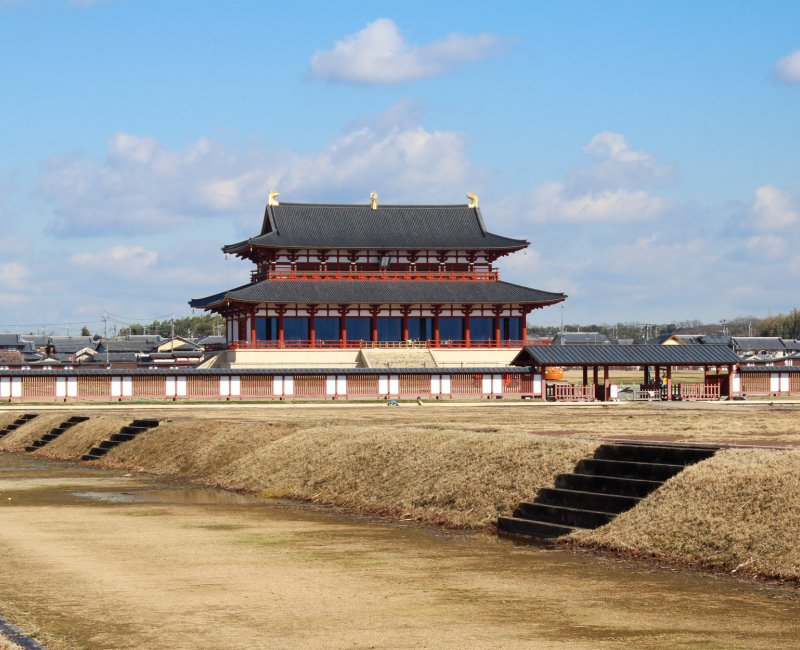
Nara Period (710 - 794)
This period is characterized by a fixed capital built on a checkered plan like Tang’s China capital, and while it is less than a century long, it is full of developments. Political and religious powers are centralized, the state continues to expand towards the south of Kyushu and the west of the Tohoku, with the founding of the Dewa province (current Yamagata and Akita prefectures). The Taiho Code, a political system that would stay in place until the end of the Heian period, is enacted to rule the country and blends local customs 🛂 to Chinese-style regulations.
Also following the continental example, an official history is established by compiling the first imperial chronicles in Sino-Japanese and in Chinese:
- Kojiki (古事記, "Records of Ancient Matters") in 712, to highlight the imperial family’s divine origins. The records also are the first written piece to mention the Ainu, Hokkaido’s indigenous people, in the Japanese language;
- Nihon shoki (日本書紀, "The Chronicles of Japan") in 720, tells the history of the country up until the end of the 7th century.
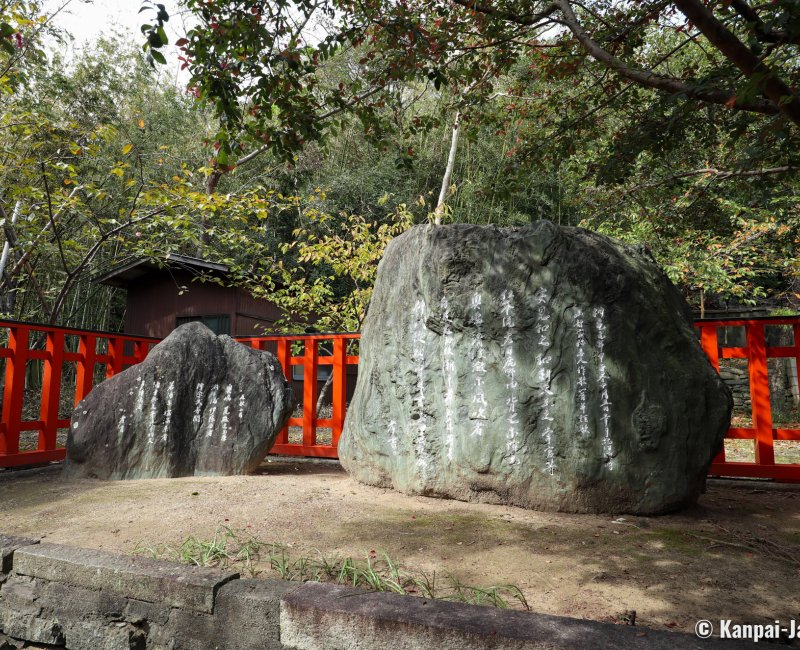
Relationships with China and the Korean kingdoms are still going strong, with exchanges of diplomats, scientists and goods, as well as military alliances. Trade is thriving and tea, as well as tofu, miso, and even Go game and various music instruments were imported in Japan for the first time at this period.
The Nara period is also rich on the cultural level. The first Japanese poems anthology, the Man'yoshu, was compiled around 760. it is still relevant today as its text is used to name the imperial eras.
Arts develop in the 8th century, often based on Chinese models:
- The emakimono, which are illustrated scrolls to unroll horizontally. Initially made to picture sutras, they became over time illustrated books for non-religious stories;
- Dry lacquer and clay sculpture in the Buddhist sculpture area.
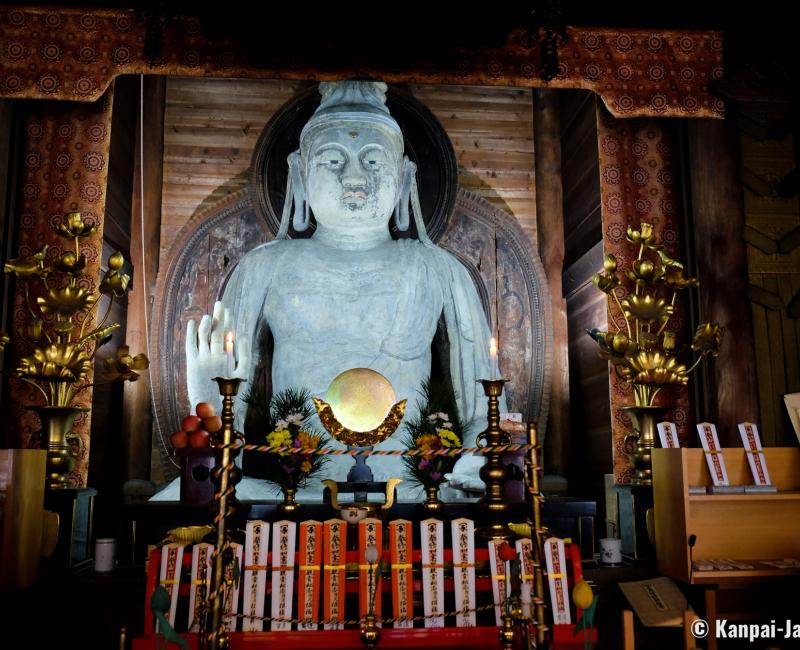
The Buddhist religious architecture is the art category that left the largest number of samples, like the Todai-ji temple, founded in 752. The elites live in tiled roof houses with leisure gardens in the cities. The rest of the population are mainly farmers living in villages or hamlets, in semi-buried houses with thatched roofs that still bear a great resemblance with the previous periods’ houses. However, the traditional Japanese house’s features appear with the first constructions of stilt houses.
Buddhist clergy’s influence is growing and extents beyond the Imperial Court thanks to wandering monks like Gyôki (668 - 749) who spreads the teachings of Buddha while working to improve the rural populations’ livelihood.
At its peak, Heijo-kyo (in nowadays Nara) extends on more than 4 km² and is said to have homed nearly 200,000 inhabitants, including 10,000 public servants.
At the end of the period, the capital is relocated in Heian (today’s Kyoto) to put some physical distance with the Buddhist clergy’s influence. Heian-kyo thus became the imperial city until 1868, for more than a 1,000 years!
Heian period (794 - 1185)
Thanks to the political stability of the Heian period, the imperial court managed to assert its power, especially through the development of an intrinsically Japanese culture and arts, despite the pervasiveness of the Chinese cultural influence.
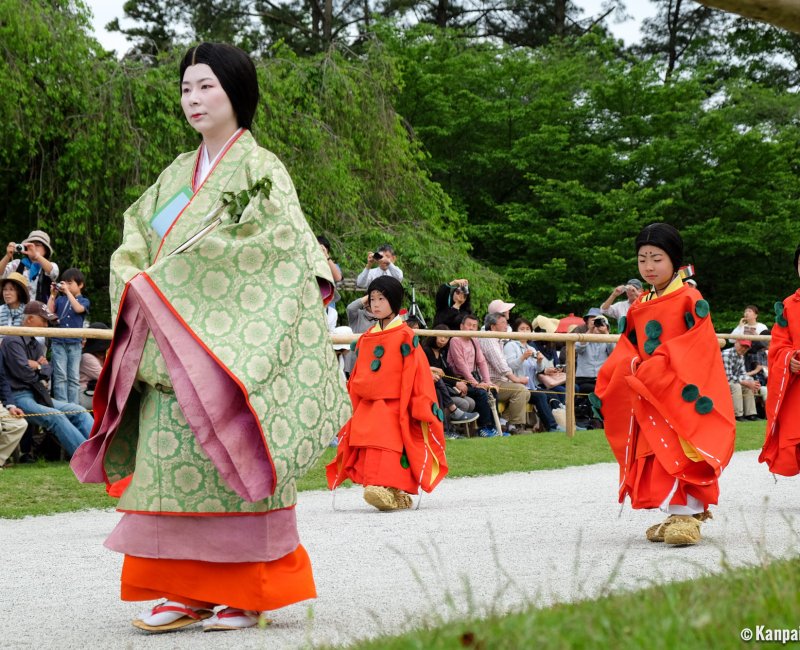
Strategically located in the Kansai area, Heian-kyo sat at current Kyoto’s center. The city was build according to the Chinese geomantic and urbanistic principles, was delineated by the Imperial Palace in the north and spread around it toward south. Mount Hiei protected the city in the north-east. It was crossed by the Kamo River and had access to the sea thanks to the Yodo River down to Osaka Bay. Land roads connected to the eastern provinces. Heian-kyo’s street map was similar to Heijo-kyo’s, but of larger dimensions: 4,5 km east to west and 5,3 km north to south.
Emperor Kanmu (735 - 806, reign from 781) was the epitome of the imperial power. He ended a (38 years!) long military campaign against the Emishi, a people living in the north and the east of Japan, allowing him to expand Japan’s territory to the east of Honshu in 802, but without conquering the whole country. In the meantime, trade relationships were nurtured with the Ezo (a population living in Hokkaido, presumably the descendants of the people who arrived during the Jomon period).
However, from the second half of the 9th century, the emperor is reigning in title only and power is actually in the hands of regents, who are primarily recruited within the Fujiwara family, a clan that managed to weave close matrimonial ties with the imperial dynasty, thus ensuring control over ruling until the end of the period.
From the 10th century, the provinces started to rise, with local elites establishing armed forces, gradually creating the warrior class, the bushi.
During the 9th century, diplomatic links with China loosened and were ended in 894 by Sugawara no Michizane, a statesman and man of letters worshipped as Tenjin in Tenman-gu shrines, which indirectly led to the country’s voluntary isolation.
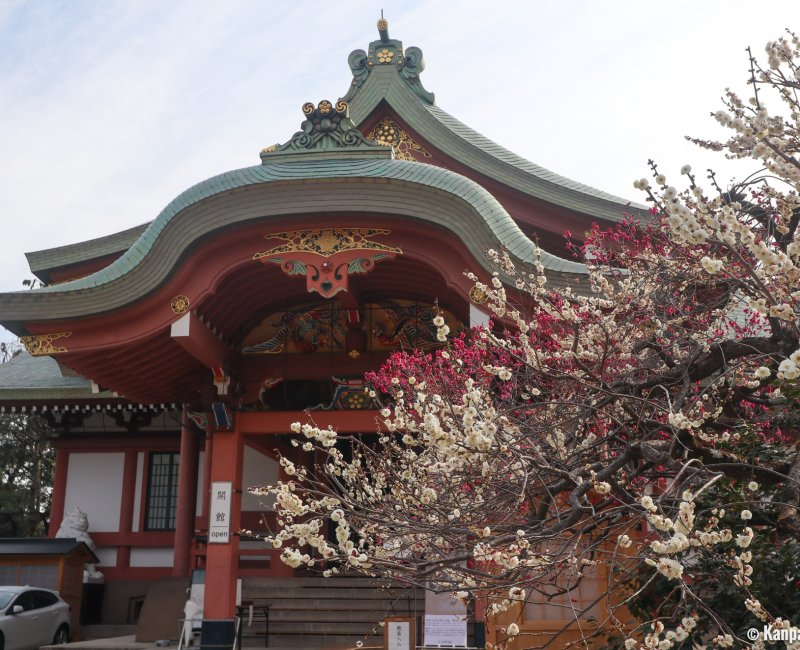
The "soul of Japan" (Yamato-damashii) then starts to develop: the kana syllabary is created allowing the blooming of Japanese literature, especially at the Court and in the Buddhist clergy. The first contemporary novels and historical accounts were written during the Heian period, such as The Tales of Ise (anonymous, 10th century), or The Tale of Genji (Murasaki Shikibu, 11th century). These texts are illustrated with polychromatic paintings called Yamato-e, characterized by views on indoor scenes allowed by a perspective suppressing the roofs, and stylized bodies.
As for architecture, the end of the period is characterized by the apparition of the Shinden-zukuri style in palace building, a style more suitable to the Japanese climate, with elevated floors on stilts, sliding panels rather than walls, tatami flooring and a roof covered in hinoki cypress bark. For temples, the style is still of Chinese inspiration overall, even if covered galleries are added, such as in Byodo-in (Uji). Shinto shrines are built in the nagare style, characterized by an asymmetrical roof, with a longer slope on the side to create a projecting roof, like in Ujigami-jinja shrine (12th century).
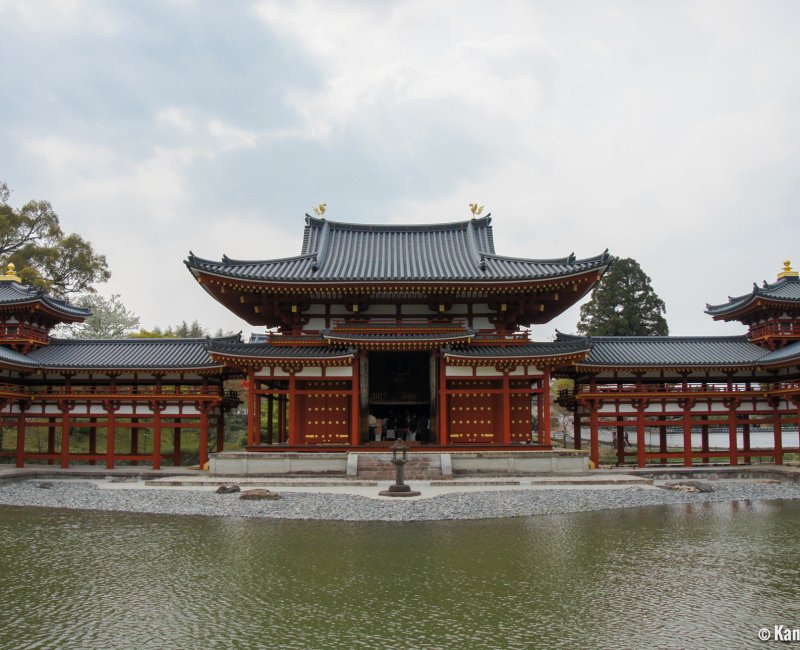
As for sculpture, wood replaces lacquer and clay, and the statues, first shaped in the Tang dynasty style, tend to become more stylized in the same fashion as the Yamato-e painting. Decoration is embellished with gold lacquer and mother of pearl inlays, such as Chuson-ji temple in Hiraizumi.
Buddhism continues to spread and 2 schools stand out:
- The Tendai school ("celestial terrace") founded in 805 by Saicho (767 - 822), a monk who opposed the clergy based in Nara, as his doctrine involved that anyone could reach enlightenment. He founded Enryaku-ji temple on Mount Hiei at the end of the 8th century or in the early 9th century.
- The Shingon School ("true word") specifically Japanese, was founded by Kukai (774 - 835, posthumous name: Kobo Daishi) and can roughly be introduced as a syncretism of Buddhism and Shinto, stressing on asceticism. Kukai was at the origins of the founding of Mount Koya in 816, and also of the 88 temples of the Shikoku pilgrimage.
Overall, Buddhism and Shinto don’t oppose and tend to complete each other; the 2 spiritual practices were frequently associated at the times.

The end of the Heian period sees the rise of the bushi class that culminates during the Gempei War (1180 – 1185) opposing the Taira and the Minamoto clans in a war for succeeding the imperial throne. The war ends with Minamoto no Yoritomo seizing power and establishing his capital in Kamakura so as to be away from clergy and nobility’s interference.
In the middle of the 12th century, Japan’s population amounts to about 7 million inhabitants fairly spread throughout the Kinai (the area around today’s Kyoto, Nara and Osaka) and the Kanto area.

